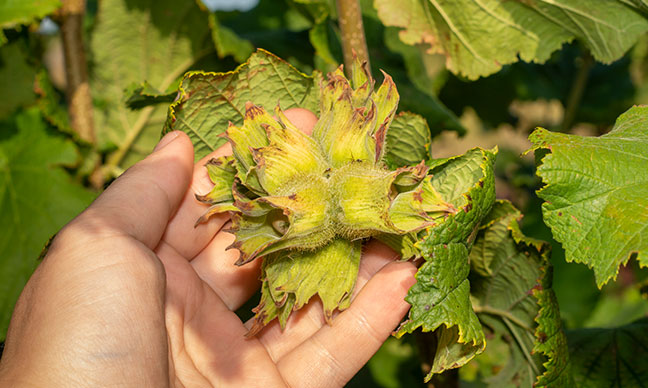From oak to magnolia, you have a long list of trees to plant in Austin. Nonetheless, more than choosing the right tree to grow, it is also important that you are familiar with the potential problems. By being knowledgeable of Austin tree diseases, you can have a higher rate of success, making sure that you grow healthy trees.
While trees add shade and beauty to any property, they can be a headache to deal with. Ensuring their health isn’t easy. You must recognize the most common diseases, including those on our list.
Austin Tree Diseases You Need to Know
1. Oak Wilt
One of the most common oak tree diseases in Austin, oak wilt is caused by a fungus that moves through insect vectors and roots. This disease limits the flow of water to the top of the tree. It is most common in red oak and less in white oak.
The most common sign of this disease is the wilting of the leaves. Brown spots start to develop immediately upon infection. Discoloration begins at the outer edge and goes until the middle vein of the leaves. Branches and barks also die as a result of this disease.
Cutting root connections is one of the best ways to stop the disease from spreading. A trenching machine or mini excavator will come in handy to get rid of damaged roots. Diseased and dead hosts require instant tree removal Austin before the disease spreads.
2. Fire Blight
The name of this tree disease is an obvious reference to what it looks like. It scorches the leaves of the host, resulting in what looks like a fire. This is a destructive bacterial disease that is common in apples, pears, and roses, among others.
Fire blight starts at the tips of the branches. From here, it travels to the stem, causing the latter to die. It starts attacking new growth, so it is most noticeable at the top-most part of its host.
The best way to prevent fire blight is to grow resistant plants. The removal of diseased wood is another effective solution. While doing this, avoid heavy pruning. You can also use chemical treatment options, such as copper products, which are most effective when you apply them to open blossoms.
3. Root Rot
As the name implies, this is a disease the attacks the roots. The easiest way to identify its presence is through soft and brown root spots. When the roots are healthy, they are firm. Once attacked, however, they turn mushy, and eventually, will die.
After the identification of root rot, assess the condition of the host, and determine if you can still save the plant. When the damage is too severe, then you have no option but to remove the tree. If it is still manageable, you can replant using fresh and healthy soil while making sure there is good drainage. Adding organic matter to the soil also helps to improve its overall quality.
There are also biological agents and chemical fungicides promising to address root rot. Before application, you should know the exact cause of the disease.
4. Bacterial Leaf Scorch
A common disease in shade trees, bacterial leaf scorch affects oak species in Austin. It is a chronic disease that starts early in the fall and can be fatal without early intervention. Some of the most common signs include defoliation and leaf browning.
This disease is caused by Xylella fastidiosa, a bacterium carried by spittlebugs, treehoppers, and leafhoppers. It clogs the xylem vessels of the tree. During the cold months, the bacteria can overwinter in the xylem and will start spreading its wrath on the next growing season.
When it comes to interventions, the most important are good sanitation and vigor maintenance. Antibiotic injections can also help. Nonetheless, take note that there is no cure. All that you can do is to execute preventive measures, such as tree trimming Austin. This helps get rid of the infected parts of the tree so that it won’t spread.
5. Hypoxylon Canker
Like other oak tree diseases, it can compromise structural integrity and eventually result in tree mortality. This disease shows up on the dead lesions of branches, trunks, and limbs of its host. Some of the most common symptoms include yellowing or browning of leaves, thinning canopy, and reduced twig growth.
In most instances, it is too late when hypoxylon canker is discovered. At such time, most parts of the tree will be already dead, and the tree is a hazard, especially in an area with high foot traffic or any property that can be destroyed.
Vertical mulching is one of the most promising solutions to address this tree disease. This will help in stimulating the feeder roots. Remedial pruning also helps. If all else fails, then tree removal is the best thing to do.
FAQs
Q: Does my tree have a disease?
A: The best way to answer this question is to look for signs. From the color of the leaves to the condition of the bark, inspect the tree from the top to the bottom. Take a closer look to see if pests are present.
Q: How do you cure a diseased tree?
A: To cure a diseased tree, consider applying an effective fungicide. You also need to prune the affected branches to prevent diseases from spreading to the healthy parts. You might even need to remove the tree in the worst cases. Regardless, for the best solutions, consult with the providers of tree services Texas.
Q: Is fungus on trees harmful?
A: Yes, fungus can harm trees. It can break down the structural integrity of the tree, resulting in its fall. It also attacks the leaves, which negatively impacts the ability of the tree to produce food.
Related Post: Tree Fungus Texas
Local Tree Experts Overview
From oak wilt to bacteria leaf scorch, Austin tree diseases are frustrating. They damage not only aesthetics but also structural integrity. The good news is that you can avoid many of these diseases. A proactive approach in tree care and maintenance is necessary.




